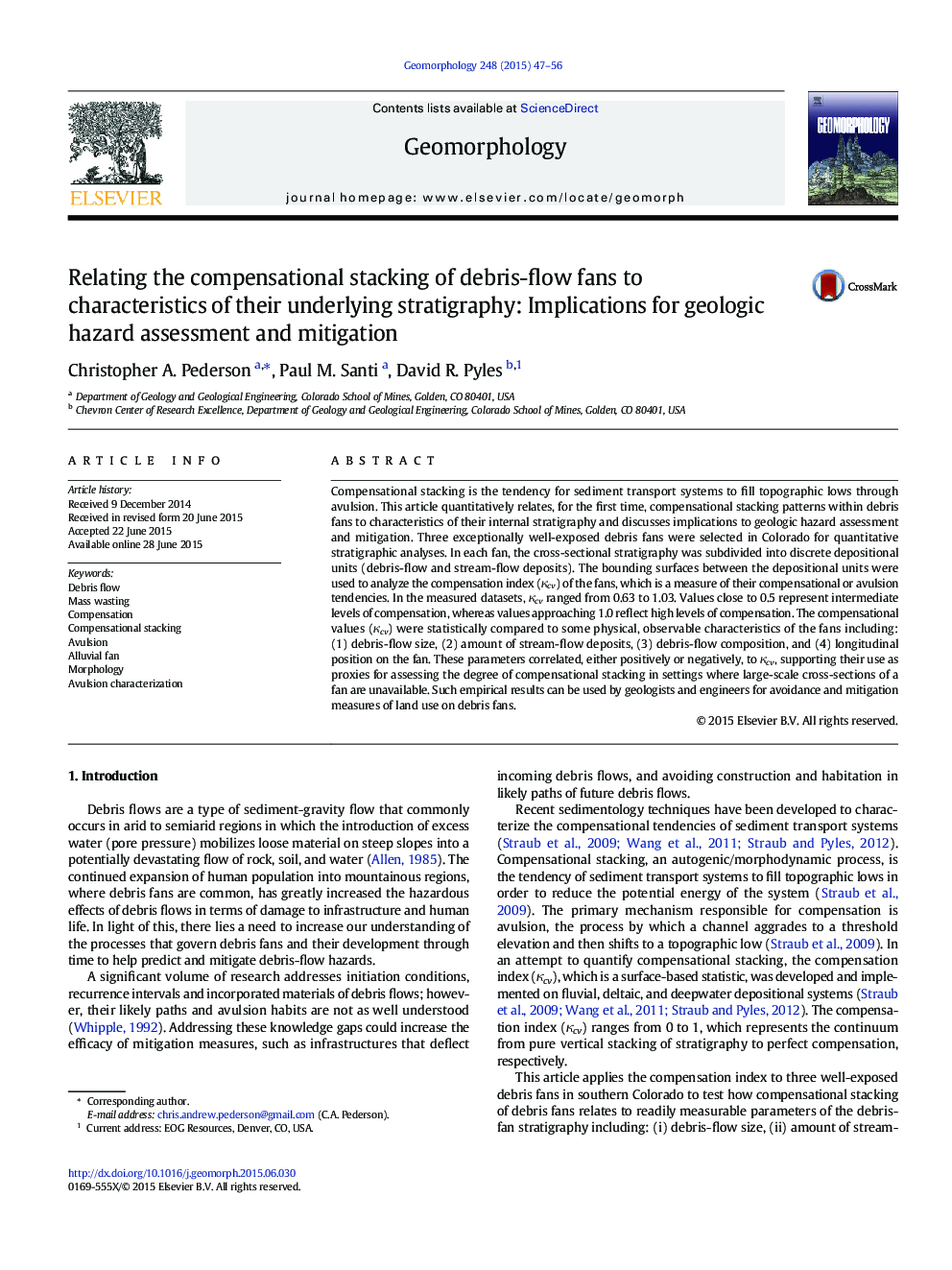| Article ID | Journal | Published Year | Pages | File Type |
|---|---|---|---|---|
| 6432029 | Geomorphology | 2015 | 10 Pages |
â¢A method to predict compensational (avulsion) tendencies of debris fans is proposed.â¢The compensation index of 3 debris fans in Colorado was analyzed.â¢Indices were statistically compared to other readily observable fan characteristics.â¢Relationships can be used to advise debris-flow hazard recognition and mitigation.
Compensational stacking is the tendency for sediment transport systems to fill topographic lows through avulsion. This article quantitatively relates, for the first time, compensational stacking patterns within debris fans to characteristics of their internal stratigraphy and discusses implications to geologic hazard assessment and mitigation. Three exceptionally well-exposed debris fans were selected in Colorado for quantitative stratigraphic analyses. In each fan, the cross-sectional stratigraphy was subdivided into discrete depositional units (debris-flow and stream-flow deposits). The bounding surfaces between the depositional units were used to analyze the compensation index (κcv) of the fans, which is a measure of their compensational or avulsion tendencies. In the measured datasets, κcv ranged from 0.63 to 1.03. Values close to 0.5 represent intermediate levels of compensation, whereas values approaching 1.0 reflect high levels of compensation. The compensational values (κcv) were statistically compared to some physical, observable characteristics of the fans including: (1) debris-flow size, (2) amount of stream-flow deposits, (3) debris-flow composition, and (4) longitudinal position on the fan. These parameters correlated, either positively or negatively, to κcv, supporting their use as proxies for assessing the degree of compensational stacking in settings where large-scale cross-sections of a fan are unavailable. Such empirical results can be used by geologists and engineers for avoidance and mitigation measures of land use on debris fans.
